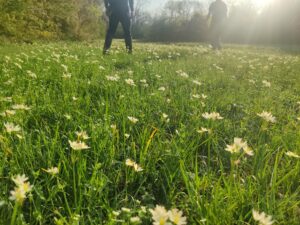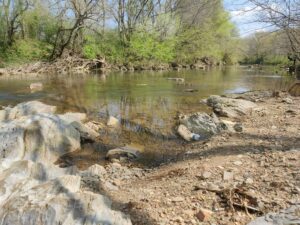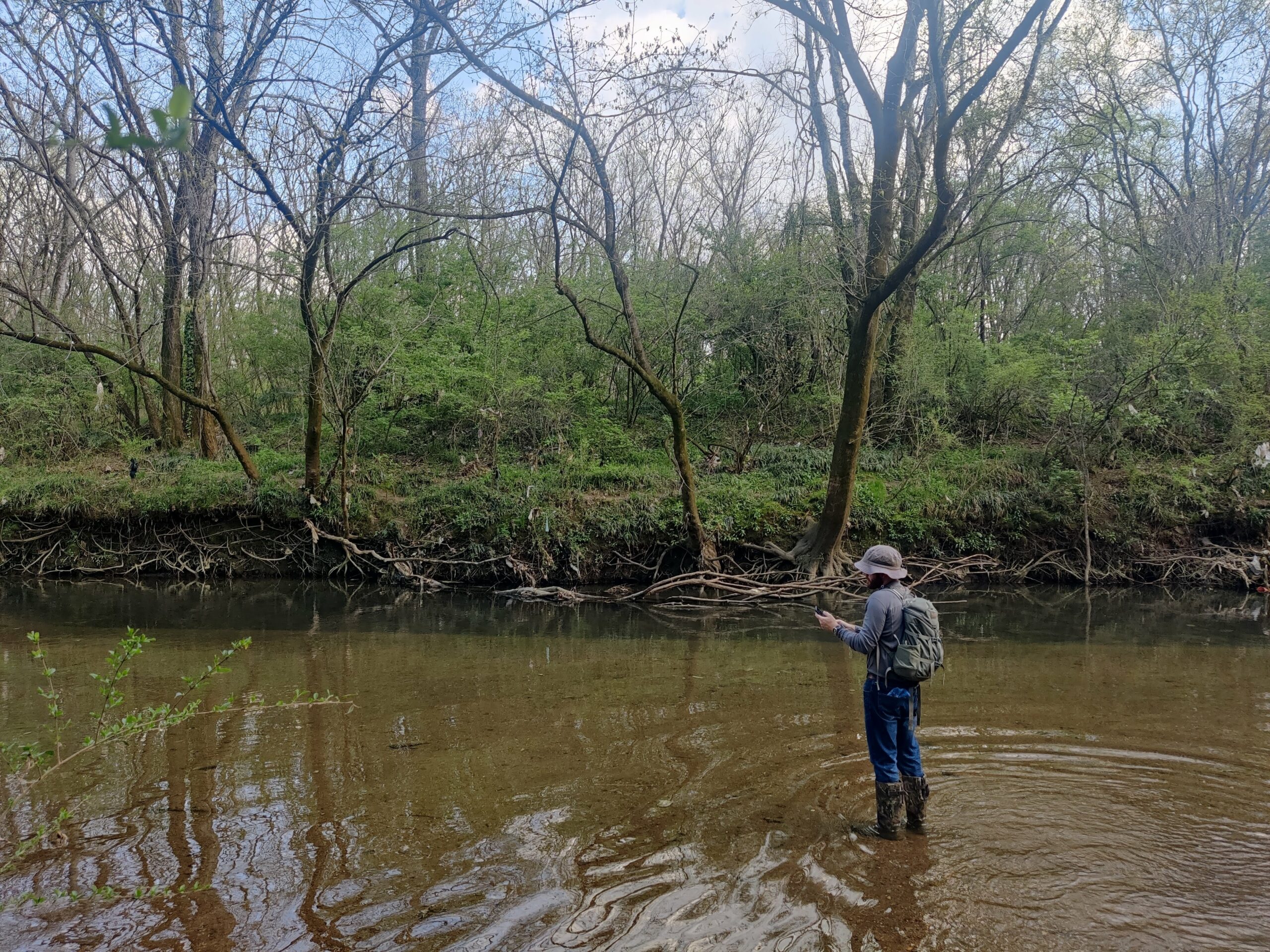
During an unseasonably warm week in early March, FLT staff embarked on one of the first monitoring visits of the year to Valley Creek CU2 (Conservation Unit 2), which consists of five parcels totaling 125 acres along Valley Creek and a few of its small tributaries. A large percentage of this land sits in a floodplain, and with the recent and frequent rains having left their mark, staff set out with rubber boots in tow.
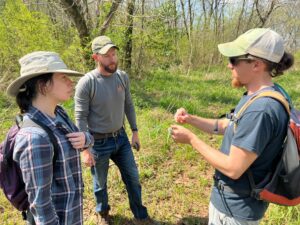
Though the vernal equinox was still two weeks away, spring had already sprung at Valley Creek. Mounds of violet wood sorrel bounced around our ankles and plush grasses and clumps of spiderwort stretched ahead like a high-pile carpet. False garlic, common violets, and eastern spring beauties nodded at every footfall.
On properties like this one where virile Chinese privet has dominated the landscape all winter, the emergence of fresh spring greens was a welcome sight. Privet’s arching, evergreen growth quickly spreads through wooded understories and along riparian zones, creating a thick screen of small leaves on long, woody stems, suppressing competing vegetation and effectively eliminating native species. The wettest tracts we trudged were blissfully privet-free, but creeping lilyturf (monkey grass) doesn’t mind sludge-like conditions. Its distinctive strap-like leaves with rounded tips protruded from the mud in small but deliberate patches—Just another reminder of the indiscriminating reach of invasive plants.
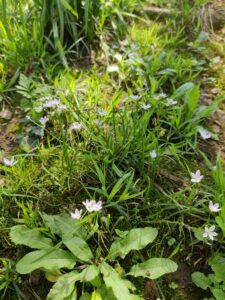

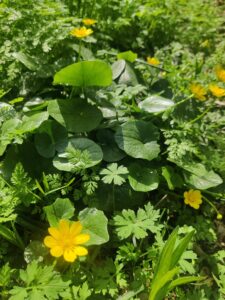
Many of FLT’S original properties (acquired as a result of the Jefferson County sewer litigation settlement in 1996) were already afflicted with invasives when they were acquired; these plots were purchased specifically to conserve buffer zones bordering Jefferson County waterways, thereby limiting non-point-source pollution. Because mitigation procedures for invasive species are immensely time consuming and expensive, and disruptive to the terrain in these buffer zones, more effectual conservation efforts such as erosion control are prioritized.
Valley Creek and the surrounding floodplain supports a range of fauna. In addition to the many excited pollinator species whizzing through the air, staff spotted a great blue heron, a common wood duck, clouds of tadpoles, schools of fish, and two snapping turtles, one that was of a “safe to inspect” size. More noticeable, however, was the litter nestled in the soft ground, including cans, bottles, toys, tires, and small, unidentifiable plastic pieces, discolored from the sun and dirt but still shiny enough to catch the eye. Hanging in the trees along the banks were waterlogged scraps of fabric clinging tightly to low-slung branches and suspended higher up were tattered, tangled plastic bags, swaying like laundry from a line.
More noticeable, however, was the litter nestled in the soft ground, including cans, bottles, toys, tires, and small, unidentifiable plastic pieces, discolored from the sun and dirt but still shiny enough to catch the eye. Hanging in the trees along the banks were waterlogged scraps of fabric clinging tightly to low-slung branches and suspended higher up were tattered, tangled plastic bags, swaying like laundry from a line.
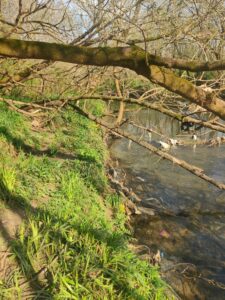
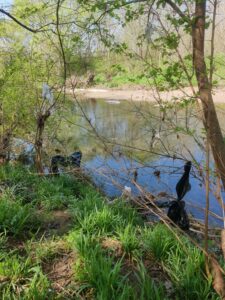
Unfortunately, dumping is evident in this area, which when combined with litter buoyed into the floodplain by stormwater, creates a shocking amount of wet trash. Valley Creek is equipped with a total of 4 litter gitters, trash-collection devices that float in-stream, tethered to the banks by long orange buoys (“arms” outstretched on either side) that help funnel floating litter into the trap. These devices are cleaned and maintained by Osprey Initiative, who have deployed over 30 devices throughout the state, including 12 devices for our Project Litter Gitter partnership in Jefferson and Shelby counties. With two active devices located upstream in downtown Birmingham and two downstream, a large amount of trash is being intercepted before it reaches the Black Warrior River watershed, but more litter reduction is still needed.
FLT continues to combat litter and invasives on our properties through public and private workdays. Learn how to get involved here. With spring’s warmer weather on the way, FLT staff hopes to share more photos of flora and fauna from our properties! Follow us on social media to see more from our monthly monitoring visits.
